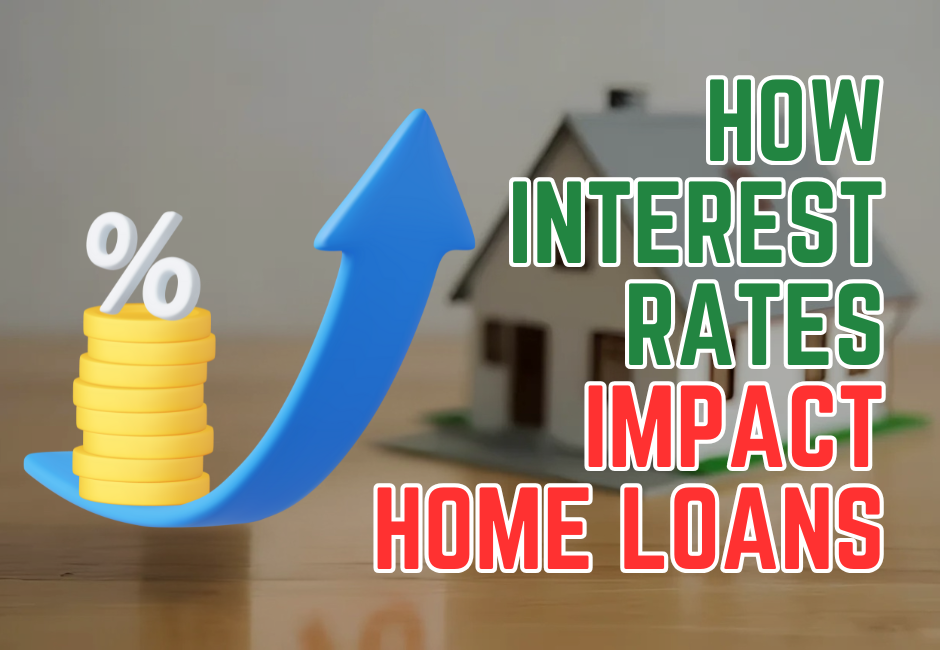
How Interest Rate Trends Affect Home Loan Repayments Over Time
The Role of Interest Rates in Determining Loan Repayments
Interest rates play a central role in shaping home loan repayments. They directly influence how much borrowers pay each month and how much total interest accumulates over the life of the loan. Whether you are a first-time buyer, seasoned investor, or a homeowner considering refinancing, understanding how interest rate trends affect mortgage repayments is crucial for making informed financial decisions.
Home loan interest rates shift in response to economic conditions, inflation, central bank policies, and global market movements. When rates are low, borrowers benefit from cheaper mortgages, lower repayments, and improved affordability. When rates rise, monthly repayments increase, potentially stretching household budgets and reducing borrowing capacity.
Borrowers also need to understand how different mortgage types — particularly fixed-rate and variable-rate loans — respond to interest rate movements. While fixed-rate loans offer repayment stability, variable-rate loans can increase or decrease depending on market changes, exposing borrowers to both risks and opportunities.
This article explores how historical interest rate trends can offer insight into future repayments, how to calculate the impact of rate changes, and strategies to manage home loans through fluctuating economic conditions.
Using Historical Rate Data to Forecast Future Repayments
Interest rates in Australia have fluctuated significantly over the past few decades, often in response to major economic events. By looking at past trends, borrowers can make informed predictions about future rate movements and adjust their mortgage strategies.
Historical Trends in Interest Rates
- 1990s: Rates often exceeded 10–15%, creating challenging borrowing conditions and limiting homeownership opportunities.
- 2000s: Rates stabilised between 5–7%, providing a more predictable lending environment.
- Global Financial Crisis (2008–2009): The Reserve Bank of Australia (RBA) sharply cut rates to stimulate economic recovery, making loans more affordable.
- 2020–2021 (COVID-19 pandemic): Rates reached historic lows below 2%, driving a surge in homebuying and investment.
- 2022–2024: In response to rising inflation, the RBA raised rates sharply, pushing variable mortgage rates significantly higher.
By understanding these past movements, borrowers can better prepare for future shifts and select mortgage products that match their long-term financial plans.
Factors That Influence Future Interest Rates
While history provides useful context, several forward-looking factors determine where interest rates may head next:
- Inflation: Rising inflation typically leads central banks to increase rates to slow economic activity.
- RBA Monetary Policy: Decisions by the RBA to adjust the cash rate affect borrowing costs across the economy.
- Global Economic Events: Financial crises, geopolitical tensions, or global slowdowns can drive rate changes.
- Property Market Trends: Strong housing demand and price growth may influence bank lending practices and interest rate offerings.
Staying informed about these drivers allows borrowers to make proactive mortgage decisions.
Calculating the Impact of Rate Fluctuations on Repayments
Even a modest rate increase can have a major effect on monthly mortgage costs. Understanding these impacts helps borrowers plan ahead and avoid financial strain.
Example of Rate Change Impact
For a $500,000 loan over 25 years:
| Interest Rate | Monthly Repayment | Total Interest Over 25 Years |
| 2.5% | $2,243 | $172,900 |
| 4.0% | $2,639 | $291,700 |
| 5.5% | $3,068 | $420,400 |
| 7.0% | $3,533 | $559,900 |
Clearly, as rates increase, both monthly repayments and total borrowing costs rise sharply — underscoring why rate awareness matters.
Fixed vs. Variable Rate Loans: Understanding the Differences
- Fixed-Rate Loans: Lock in a set interest rate, offering protection against rising rates but no benefit if rates fall. Ideal for budgeting certainty.
- Variable-Rate Loans: Move up or down with market conditions, exposing borrowers to potential cost increases but also potential savings.
Choosing between fixed, variable, or split loans depends on your financial goals, risk tolerance, and market outlook.
Stress Testing Loan Repayments
Lenders apply serviceability buffers — typically assessing borrowers’ ability to repay loans at a rate 2–3% higher than the actual loan rate. Homeowners should adopt a similar approach: calculate repayments at higher rates to ensure sufficient financial buffer.
Case Study: Real-World Impact of Rate Changes
Borrower 1: Fixed-Rate Strategy
Sarah secured a $600,000 loan at 2.8% fixed for five years in 2021, with monthly repayments of $2,815. When the fixed term ended in 2026, rates had risen to 5.5%, increasing her repayments to $3,682.
To manage this, Sarah:
- Refinanced to a 4.8% rate with a new lender.
- Made extra repayments during the fixed term to reduce the balance ahead of the rate reset.
Borrower 2: Variable-Rate Strategy
James took a $500,000 variable-rate mortgage at 3.0% in 2020. By 2023, rates rose to 5.5%, pushing his repayments from $2,108 to $3,068.
James:
- Used an offset account to reduce interest.
- Made lump sum repayments when rates were low.
- Refinanced to a more competitive lender before further increases.
Planning Ahead: Strategies for Managing Rate Changes
To manage rate volatility effectively:
- Monitor market trends and RBA announcements.
- Use stress-tested repayment calculations to assess affordability.
- Consider refinancing when rates shift to improve loan terms.
- Leverage mortgage features like offset accounts and extra repayments to reduce costs.
By anticipating changes and acting early, borrowers can maintain financial resilience and avoid mortgage stress.
Final Takeaways
Interest rate trends are central to home loan costs. Borrowers who understand the relationship between rates and repayments can make smarter choices, manage risk, and maximise savings.
Summary for borrowers:
- Stay informed on market trends and economic indicators.
- Run repayment scenarios at higher rates to prepare for potential increases.
- Evaluate whether fixed, variable, or split loans best fit your strategy.
- Regularly review your mortgage and refinance if better deals become available.
By being proactive and well-informed, borrowers can protect their budgets, reduce total loan costs, and navigate changing markets confidently.




